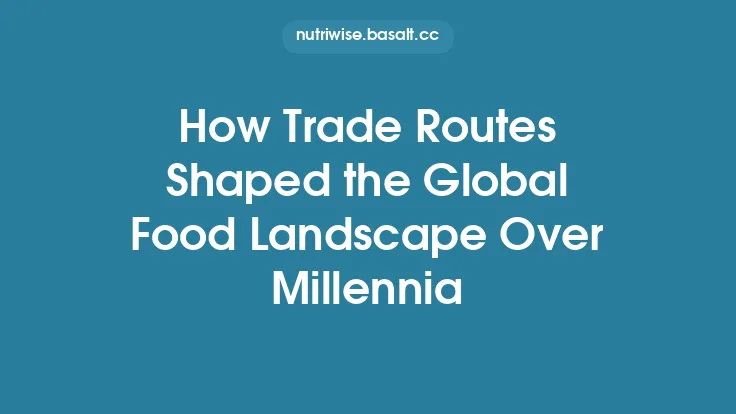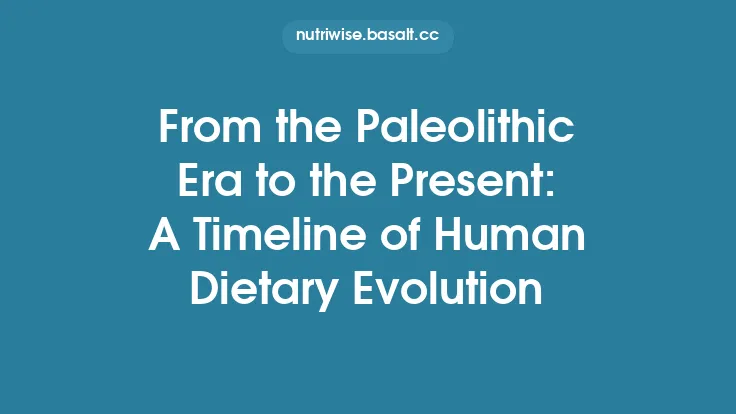The allure of spices has been a driving force behind some of the most consequential movements in human history. Long before the modern supermarket aisle, dried peppercorns, fragrant cinnamon sticks, and fiery chilies were coveted commodities that could tip the balance of power between empires, spark wars, and reshape the very way societies experienced food. Their journey from remote forests and plantations to kitchens across the globe is a story of curiosity, ambition, and the relentless pursuit of flavor—a story that continues to define the palate of today’s diners.
Early Origins and Regional Uses
Spices first emerged in the ritual and daily lives of the peoples who cultivated them. In the Indian subcontinent, black pepper (*Piper nigrum) was harvested from dense tropical vines and used not only to season food but also in Ayurvedic medicine and religious ceremonies. In the Horn of Africa, frankincense and myrrh were burned as incense, while in the islands of the Indonesian archipelago, cloves (Syzygium aromaticum) and nutmeg (Myristica fragrans*) grew in the understory of volcanic soils, their aromatic compounds prized for both culinary and ceremonial purposes.
These early uses were deeply embedded in local cultural practices, and the knowledge of how to process, store, and apply each spice was transmitted through generations. The phytochemical profiles—such as piperine in pepper, eugenol in cloves, and capsaicin in chilies—were recognized intuitively for their ability to transform the sensory experience of food, making bland staples more palatable and enhancing the perceived value of meals.
Caravan Routes and Maritime Corridors
The first true “global” dissemination of spices occurred along overland caravan routes that linked the Indian Ocean rim with the markets of the Near East and the Mediterranean. The Silk Road, while primarily known for silk and porcelain, also facilitated the movement of spices like cinnamon and cardamom. Merchants from the Arabian Peninsula acted as intermediaries, transporting spices in sealed containers to protect them from moisture and spoilage, a practice that required sophisticated knowledge of packaging materials such as camel‑skin bags and lacquered wooden boxes.
Maritime trade soon eclipsed overland routes in efficiency. By the 9th century, Arab dhow fleets navigated the monsoon winds, establishing a network that connected the ports of Calicut, Hormuz, and Aden with the bustling bazaars of Baghdad and Cairo. The development of the “spice route” was underpinned by advances in shipbuilding—particularly the adoption of the lateen sail, which allowed vessels to tack against prevailing winds—and the creation of standardized weight measures (the “mudd” and “qirat”) that facilitated fair trade.
The Age of Exploration and the Spice Monopoly
European appetite for exotic flavors intensified during the late medieval period, culminating in the Age of Exploration. Portuguese navigators, led by Vasco da Gama, breached the Indian Ocean barrier in 1498, establishing a direct sea link to the spice-producing regions of India and the Maluku Islands. This breakthrough shattered the Arab monopoly and set the stage for a fierce competition among European powers.
The Dutch East India Company (VOC) and the British East India Company (EIC) soon dominated the spice trade, employing a combination of naval power, fortified trading posts, and strategic alliances with local rulers. The VOC, for instance, instituted a “cultivation system” in the Banda Islands, where nutmeg and mace were grown under strict control, and any deviation was met with violent suppression. These monopolistic practices not only dictated the flow of spices but also introduced a new economic logic: spices became a form of currency, a hedge against inflation, and a driver of early modern capitalism.
Spices as Catalysts for Cultural Exchange
Beyond economics, spices acted as vectors for cultural diffusion. The arrival of pepper in European courts spurred the development of new culinary techniques, such as the use of peppercorns in sauces and the creation of “pepper soups” that blended local ingredients with imported flavors. In turn, European demand prompted the spread of culinary knowledge back to Asia, where European cooking methods—like braising and the use of metal cookware—were adopted and adapted.
The exchange was not unidirectional. Chinese tea culture, for example, was influenced by the introduction of cinnamon and star anise, which became integral to the flavor profile of certain regional teas. In the Ottoman Empire, the incorporation of New World chilies—brought via Spanish trade routes—revolutionized the spice palette, leading to the birth of dishes that combined traditional Anatolian herbs with the heat of *Capsicum* species.
Transformation of European Palates
The influx of spices fundamentally altered European taste preferences. Prior to the 15th century, European cuisine was relatively mild, relying on herbs like sage, rosemary, and thyme. The sudden availability of pepper, ginger, and later, chilies, introduced a new dimension of pungency and warmth. This shift is evident in contemporary culinary texts: the 16th‑century French cookbook *Le Viandier* begins to prescribe pepper in meat stews, while English recipes from the same period start to feature “spice‑laden” pies.
The psychological impact of spices also played a role. In an era when food preservation was limited, the antimicrobial properties of certain spices—though not understood scientifically—were observed anecdotally, leading to a perception that spiced dishes were “safer” and thus more desirable. Over time, the association of spices with luxury and exoticism cemented their place in the European elite’s dining rituals, a status that trickled down to broader society as trade volumes increased and prices fell.
Asian and African Culinary Adaptations
While Europe was integrating spices into its culinary lexicon, Asian and African societies were equally dynamic in their adaptations. In South Asia, the Portuguese introduction of chilies in the early 16th century rapidly supplanted long‑used black pepper in many regional cuisines, giving rise to the fiery profiles that define contemporary Indian, Thai, and Indonesian dishes. The rapid adoption can be attributed to the ease of cultivating *Capsicum* in tropical climates and its potent heat, which aligned with existing preferences for strong flavors.
In West Africa, the arrival of European traders brought new spice blends, such as the incorporation of cloves and nutmeg into traditional stews. These ingredients were often combined with indigenous seasonings like locust bean and fermented millet, creating hybrid flavor profiles that persist in modern West African gastronomy.
The Legacy in Contemporary Global Cuisine
Today’s culinary landscape is a mosaic of the historical spice routes. The ubiquitous presence of cumin in Mexican tacos, coriander in Moroccan tagines, and turmeric in British curries illustrates how centuries‑old trade patterns have become normalized. Modern chefs, while often focusing on technique and presentation, continue to draw upon this legacy, curating menus that celebrate the historical journey of spices.
The digital age has further accelerated the diffusion of spice knowledge. Online platforms enable home cooks worldwide to access authentic recipes that once required a pilgrimage to distant markets. Yet, the underlying narrative remains: each pinch of spice carries with it a story of exploration, negotiation, and cultural synthesis.
Conclusion: The Ongoing Spice Narrative
Spices have traversed continents, oceans, and centuries, shaping not only the flavors on our plates but also the economic and cultural contours of societies. Their trade forged connections between disparate peoples, spurred technological innovations in navigation and storage, and redefined taste preferences across the globe. As we continue to explore new culinary frontiers, the legacy of the spice trade reminds us that the quest for flavor is inseparable from the broader human story of exchange, adaptation, and shared experience.





